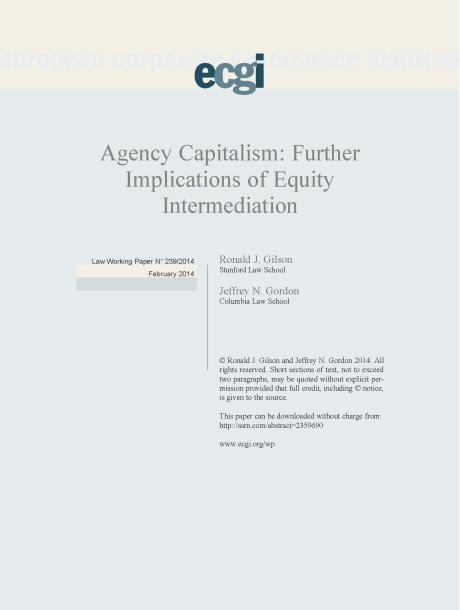
Agency Capitalism: Further Implications of Equity Intermediation
Abstract
This chapter continues our examination of the corporate law and governance implications of the fundamental shift in ownership structure of U.S. public corporations from the Berle-Means pattern of widely distributed shareholders to one of Agency Capitalism ? the re-concentration of ownership in intermediary institutional investors as record holders for their beneficial owners. A Berle-Means ownership distribution provided the foundation for the agency cost orientation of modern corporate law and governance ? the goal was to bridge the gap between the interests of managers and shareholders that dispersed shareholders could not do for themselves. The equity intermediation of the last 30 years gives us Agency Capitalism, characterized by sophisticated but reticent institutional shareholders who require market actors to invoke their sophistication. We examine here three implications of this shift in ownership distribution. The first addresses a proposal to
turn back the clock in the regulation of ownership disclosure under the Williams Act to a time when shareholders were small and dispersed rather than large and concentrated as they are today. The next two share a common theme: that the allocation of responsibility between directors, shareholders and courts can no longer be premised on a paternalism grounded in an anachronistic belief concerning the distribution and sophistication of shareholders. We show that the Chancery Court has recognized that Agency Capitalism counsels different rules concerning the roles of shareholders and the court in policing freezeouts. And we argue that the Supreme Court will come to realize what the Chancery Court has recognized for some time ? that the doctrine of substantive coercion as a basis for takeover defence must give way as Delaware corporate law adapts to the very different shareholder distribution the capital market has now given us.







